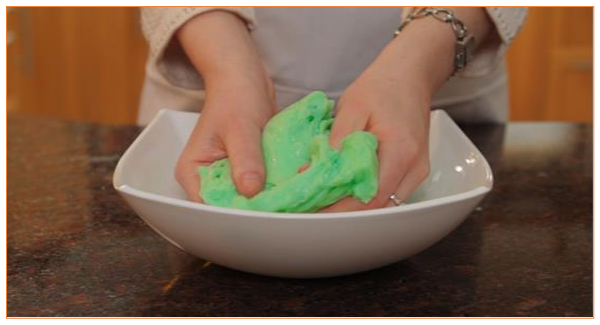This is a fun and easy video experiment that looks at how to create slime. Depending on how you mix the ingredients, you will get something that is stringy, slimy or more like mála. This is a great, quick and easy sensory experiment or video demonstration.
Methodology
Materials
- PVA Glue (regular water soluble)
- Borax Poweder
- Water
- Food Colouring
- Mixing bowl and spoon
- Two equal sized jars/glassess to measure the glue and water
- Teaspoon
- Droppers
Method
- Measure out equal amounts of water and glue. (approximately half a cup of each).
- Add them to the mixing bowl.
- Mix them together thoroughly.
- Add a few drops of food colouring.
- To make the Borax Solution: Add one teaspoon of
Borax powder (bought in local pharmacy) into another
clean cup and half fill it with water. Mix well. - Add a few drops of Borax solution to the mixing bowl
that contains the glue, water and food colouring and stir.
As you stir the slime will start to form.
You may need to add more Borax solution to ensure that
all the liquid turns to slime.
Tips
- Slime can be stored in a zip lock bag (to keep it fresh and pliable for many weeks to come).
- If you do not use food colouring, your slime should wash off most surfaces and out of most washable fabrics. Food colouring will stain your skin for quite a while and may stain clothing permanently, so use care if you create coloured slime. You can use disposable gloves to handle the slime until it dries
Precautions
- Wear aprons.
- Wash hands after the experiment.
- Do not eat the slime, and avoid contact with eyes and fabrics.
Teacher Note
White PVA glue is a plastic made from oil. Borax is a natural mineral mined from the earth. People sometimes add it to their washing to make the detergents work well. The experiment produces a fluid, cross-linked polymer. A polymer is a large molecule typically found in plastics. The slime polymer is composed of strands of PVA held together by the borate particles via hydrogen bonding. This cross-linking causes the slime. This is an irreversible reaction much like when an egg becomes a hard-boiled egg. The slime experiment is popular amongst all years while also being educational, students get to work on a recipe, use measurement, observation and teamwork skills to create the slime. Following this, a range of extension activities can be conducted in which students obtain and present evidence.
Extension Activities and Worksheets
Every experiment comes with three worksheets, one for early, middle and upper years. They can be easily copied and given to students after the activity or for homework. Access to worksheets is available in the teacher resource pack to Kitchen Chemistry.





